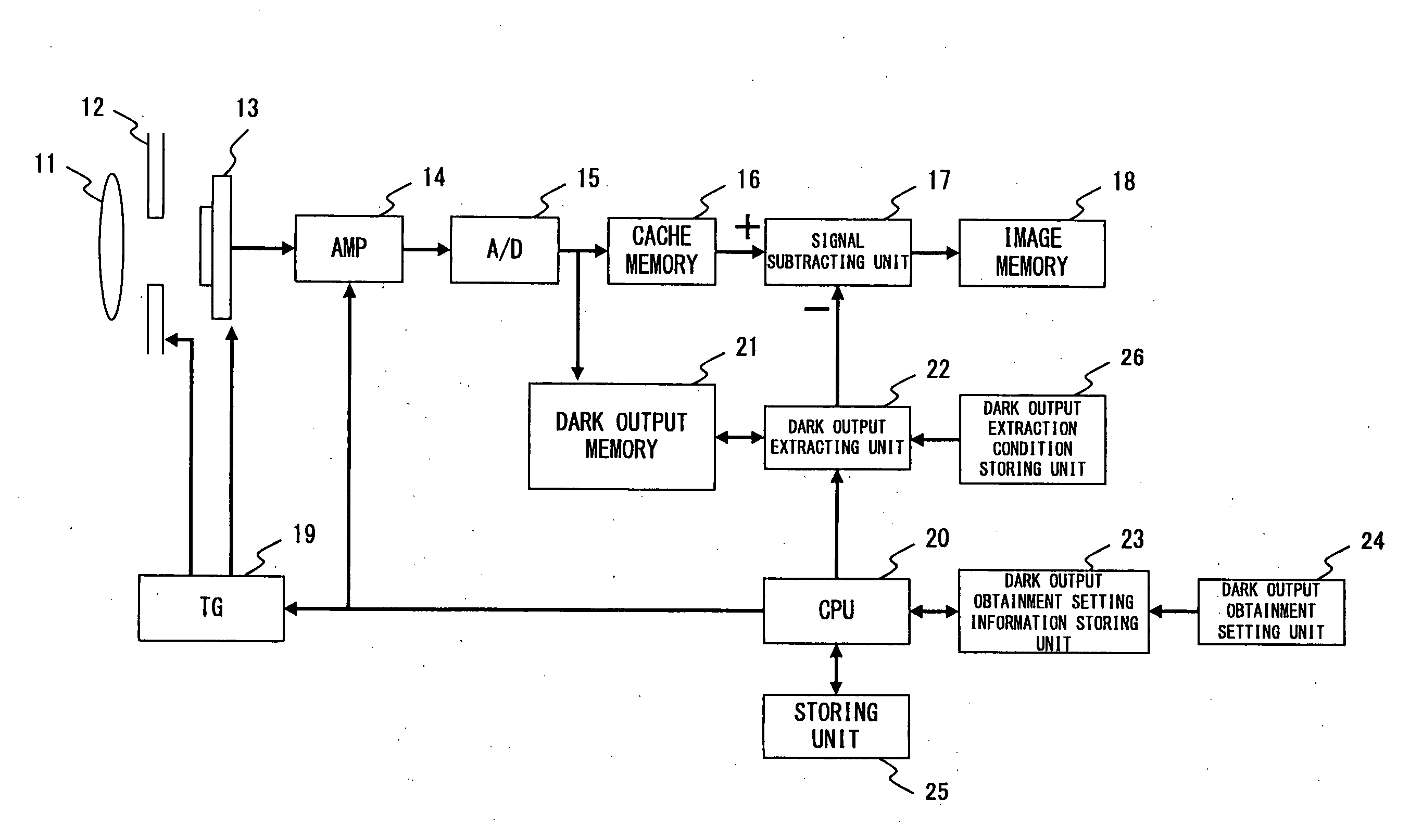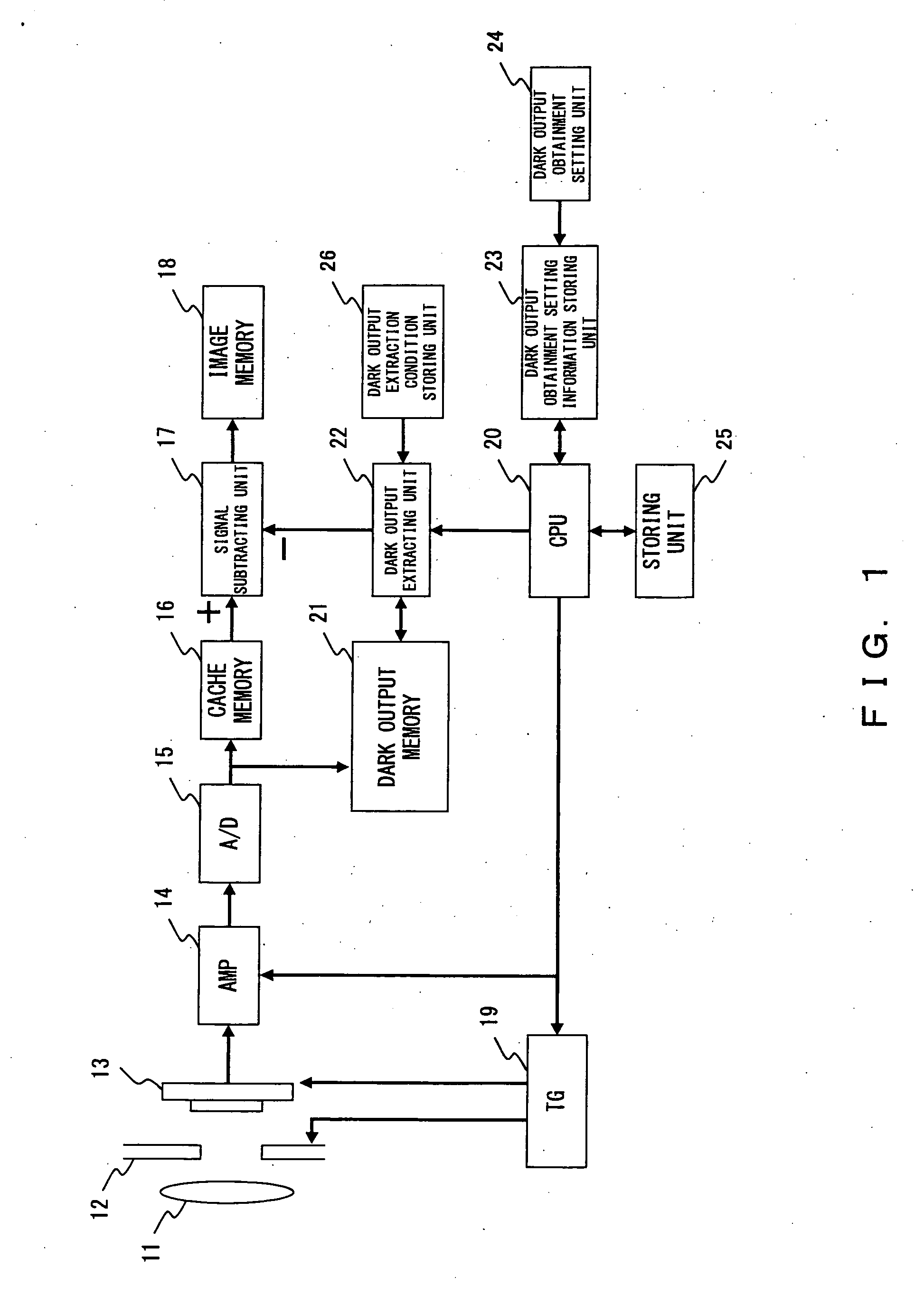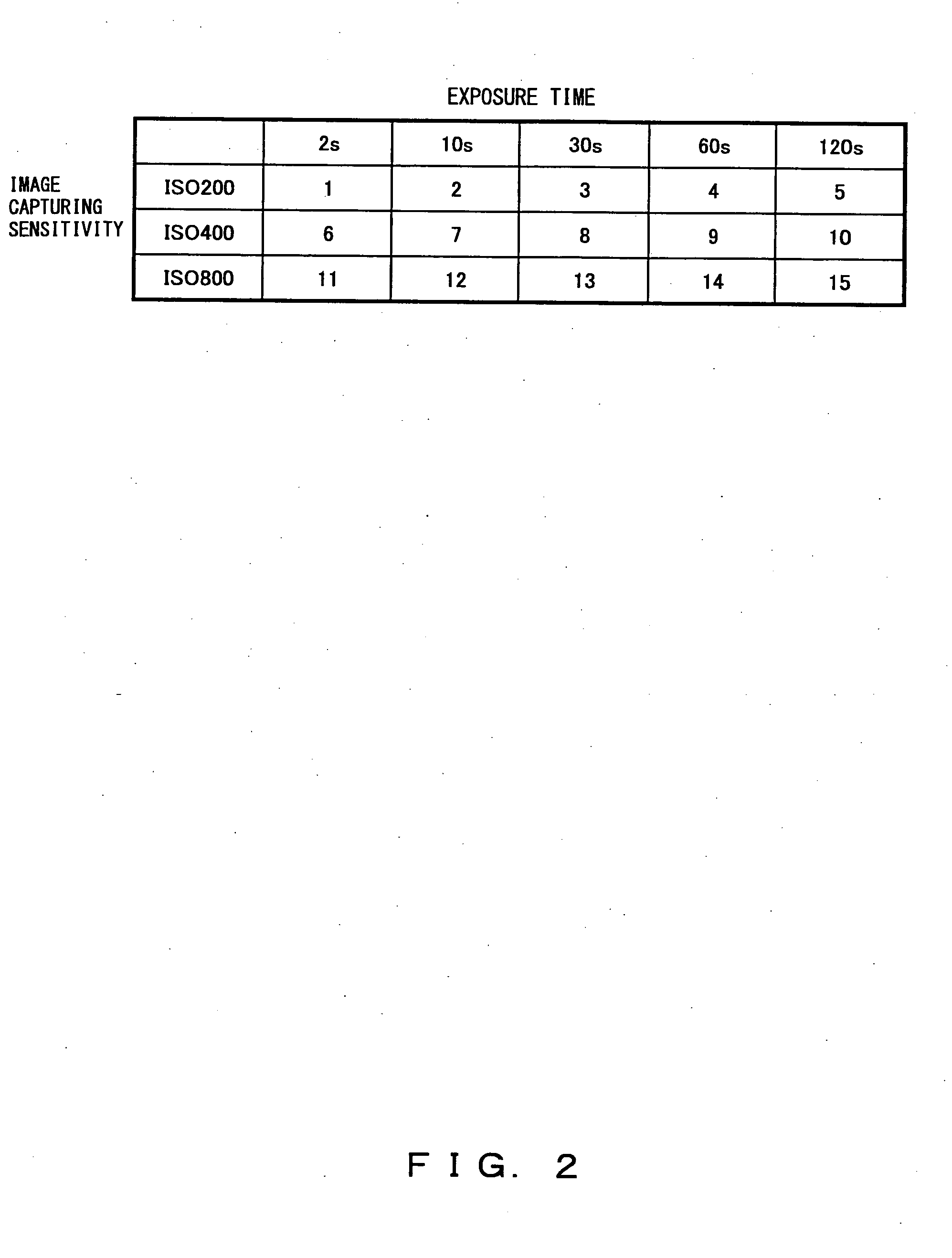Image capturing apparatus and dark current component cancel processing method
a technology of image capture and component, applied in the direction of exposure control, color signal processing circuit, instruments, etc., can solve the problems of affecting continuous image capture, dark noise increase with electric charge storage time or sensitivity, and degradation of captured image quality
- Summary
- Abstract
- Description
- Claims
- Application Information
AI Technical Summary
Problems solved by technology
Method used
Image
Examples
first preferred embodiment
[0042]This preferred embodiment refers to an image capturing apparatus for obtaining a bright-time image the dark noise of which is removed by obtaining a dark-time image under a preset image capturing condition, and by subtracting the dark-time image from the bright image obtained under the image capturing condition.
implementation example 1
[0043]With a conventional technique, influences of hindered continuous image capturing, a shutter time lag, etc. are exerted on an initial image capturing process when an image the dark noise of which is suppressed is obtained. Additionally, dark output data must be again obtained if image capturing sensitivity is changed or an exposure time is significantly prolonged even after initial dark output data is obtained.
[0044]Accordingly, this implementation example refers to an image capturing apparatus that can quickly obtain an image, the dark noise of which is suppressed, under any image capturing conditions. Namely, executed in this implementation example is a process for prestoring at least dark-time image capturing data at predetermined exposure time intervals, and for canceling a dark current component of captured observation image data by using the prestored dark-time image capturing data.
[0045]FIG. 1 shows the concept of a configuration of the image capturing apparatus accordin...
implementation example 2
[0069]The implementation example 1 provides the explanation by using dark output data in the proximity of an exposure time at the time of noise reduction. Also available is a technique for calculating and deriving dark output data, which corresponds to an exposure time, from obtained dark output data. An example of the technique in this case is described with reference to FIG. 6.
[0070]FIG. 6 explains this preferred embodiment (implementation example 2). This figure refers to the example of extracting a dark output value nx of a particular pixel x of dark output data Dx obtained with an exposure time tx.
[0071]Assume that the values of the pixel x of two pieces of dark output data D1 and D2 (see FIG. 6A), which are obtained for exposure times t1 and t2 (t12) and with the same image capturing sensitivity, are n1 and n2 respectively (see FIG. 6B). In this case, the dark output value nx is represented as follows with linear interpolation.
nx=tx-t1t2-t1n2+t2-txt2-t1n1
[0072]This interpolati...
PUM
 Login to View More
Login to View More Abstract
Description
Claims
Application Information
 Login to View More
Login to View More - R&D
- Intellectual Property
- Life Sciences
- Materials
- Tech Scout
- Unparalleled Data Quality
- Higher Quality Content
- 60% Fewer Hallucinations
Browse by: Latest US Patents, China's latest patents, Technical Efficacy Thesaurus, Application Domain, Technology Topic, Popular Technical Reports.
© 2025 PatSnap. All rights reserved.Legal|Privacy policy|Modern Slavery Act Transparency Statement|Sitemap|About US| Contact US: help@patsnap.com



